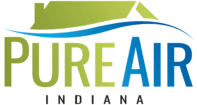Air sampling for the presence and reduction of mold spores and other contaminants in living spaces is an important practice to maintain a healthy indoor environment. Mold spores are microscopic particles that can cause various health problems, including allergies, respiratory issues, and even severe lung infections in some cases. Additionally, other contaminants such as dust mites, pollen, pet dander, and volatile organic compounds (VOCs) can also contribute to poor indoor air quality.
Air sampling is typically carried out by professionals using specialized equipment to collect air samples from different areas of a living space. These samples are then analyzed in a laboratory to identify the presence of mold spores and other contaminants. The results help determine the severity of the indoor air quality problem and guide the necessary steps for remediation.
The presence of mold spores in the air indicates the existence of mold growth somewhere in the living space. This could be due to excessive moisture, water leaks, or poor ventilation. Once identified, the source of the mold must be addressed and remediated to prevent further contamination. Common remediation techniques include fixing leaks, improving ventilation, and ensuring proper humidity control. Additionally, affected surfaces may need to be cleaned or removed to eliminate any existing mold growth.
Reducing other contaminants in living spaces also requires attention to various factors. Regular cleaning and vacuuming can help remove dust, pet dander, and pollen. Using high-efficiency particulate air (HEPA) filters in vacuum cleaners and air purifiers can further enhance air quality by capturing smaller particles. Proper ventilation, especially in kitchens and bathrooms, helps minimize the accumulation of VOCs typically released by cleaning products, paints, and other household chemicals.
In some cases, air sampling may also involve measuring the concentration of specific chemicals or gases, such as carbon monoxide and radon, which can pose serious health risks. Identifying these contaminants allows homeowners to take appropriate measures like installing carbon monoxide detectors or carrying out radon mitigation to ensure a healthy living environment.
Pure Air Indiana regularly takes pre-and-post air sampling for mold spores and other contaminants, and recognizes that it is a crucial step in maintaining a healthy indoor environment. By identifying their presence and severity, necessary measures can be taken to eliminate the sources and reduce the risks associated with these pollutants. Regular air sampling coupled with appropriate remediation techniques and preventive measures can ensure the well-being of occupants and promote a healthier living space.

